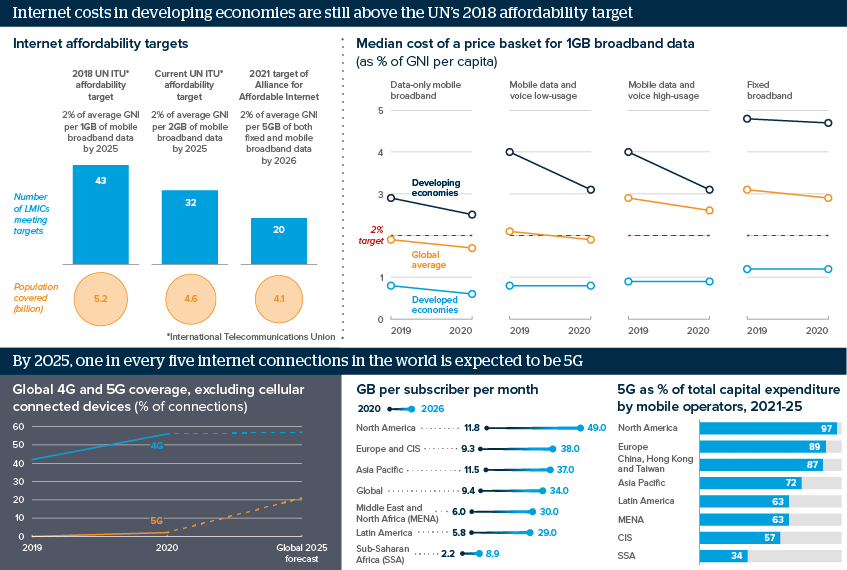Internet costs impede digital inclusion
Internet costs have fallen across the 55 low and middle-income countries that are home to 6.4 billion people
Source: Alliance for Affordable Internet; ITU and GSMA’s Mobile Economy reports (2019-21)
Outlook
By end-2020, a basic internet package of 1 gigabyte (GB) of mobile broadband data per month was affordable for 5.2 billion people across 43 low and middle-income countries (LMICs). However, fuller digital inclusion of LMICs -- characterised by access to data-voluminous services such as online healthcare, education and business -- still faces a major affordability barrier. The cost of high-usage mobile data and fixed broadband far exceeds the ITU’s 2% for 2GB target, and is nowhere close to the 2% for 5GB goal set by the Alliance for Affordable Internet.
As a result, per capita average data usage by 2026 will range from a high of 49GB per month in North America to only 8.9 in Sub-Saharan Africa. Internet costs could rise if services providers attempt to recover their high capital expenditure on 5G telecommunications by raising prices.
Impacts
- China’s 5G investment exceed all emerging and developing economies, promising a sustained boom in its digital economy.
- Sub-Saharan Africa has the greatest need for expanding internet infrastructure, but the lowest investment capacity.
- Wealth inequality within LMICs will widen the digital gaps between those who can and those cannot afford high-speed internet.
See also
- US-China tensions loom over undersea internet cables - Jun 25, 2021
- African digital economy faces uneven outlook - May 14, 2021
- More graphic analysis
